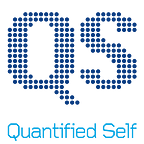Learning About Collaboration in Community Science From from Youth Leaders in the Klamath Basin
“Our staples were acorns and salmon. Within the last five generous that’s all been taken away from us and replaced with sugar and flour. Diabetes runs rampant, so we’re educating our children.” — Grant Gilkison
Four years ago Grant Gilkison set out to help the young people in his community explore the reality of the food system in the Klamath Basin. Although this remote area of Northern California coast is ecologically rich, with a history of knowledge and trade in a vast range of wild and cultivated foods, today it is a food desert. Collaborating with UC Davis researcher Kathy Kim, Grant involved local youth in assessing food security by scanning foods, measuring health, and surveying residents of the towns along the river. In the video below, you can listen to Grant, Kathy, and Jose Ramirez, one of the youth leaders who worked on the food security study, talk with other symposium participants about the successes of their program and the barriers they dealt with. Their presentation and the Q&A that follows is deeply revealing about the prospects for collaboration in community science and the possibilities for change.
Highlights from Quantified Self Public Health 2016
Introduction to Quantified Self Public Health Symposium 2016
Announcing N-of-1: The Journal of the Quantified Self
Let’s Make Active Self-Tracking Much Easier With A One Touch Device
How I Use Self-Collected Data to Change the Power Dynamic in My Clinical Practice
At the Other End of Your Screen for Depression is a Real Person… Who May Suffer from Depression
We’re Not Waiting for Our Automatic Pancreas System
Frameworks for a New Field: Quantified Self Public Health
Learning About Collaboration in Community Science From from Youth Leaders in the Klamath Basin
We’re Trying to Improve Pacific Islander Health — So Why Work with Academics?
